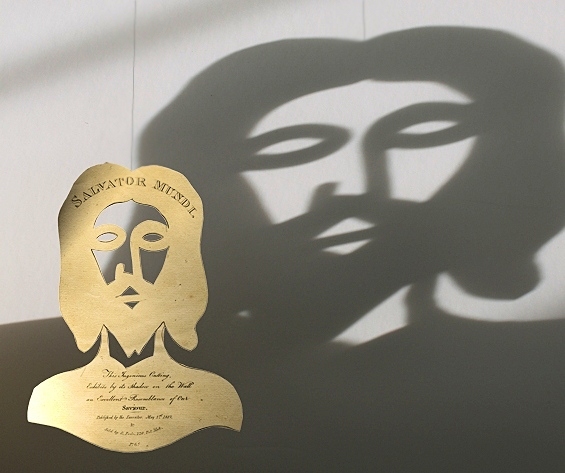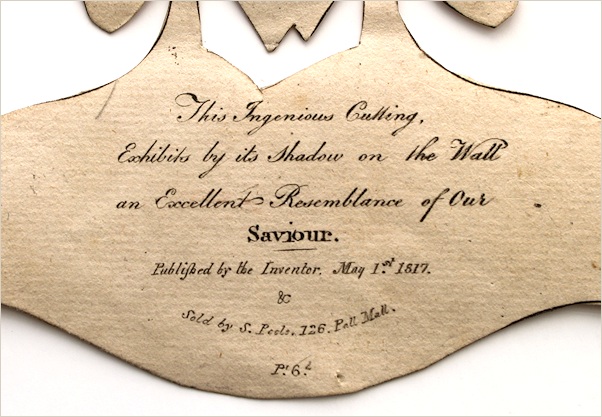 |
|
| News About Us Membership Events Links |
|

Salvator Mundi

This delicate, hand-cut paper depiction of Christ’s head is a remarkable example of ingenuity and craftsmanship. Suspended by a fine thread, the piece relies on prevailing light—whether from a window, an oil lamp, or a flickering candle—to cast its shadow onto the wall. The resulting image is hauntingly ethereal, as though a ghostly visage from the distant past has been conjured to life. Despite the lack of any physical descriptions of Christ in the Gospels or early Christian texts, this artwork aligns with the archetypal image of Christ familiar to us today: serene and contemplative, with flowing locks and a gentle countenance. Its simplicity enhances its power, capturing the essence of the divine with only a blade and the artist’s vision. Shadow art itself has a long and storied history. Pliny the Elder recounts the myth of Dibutade, a Corinthian maid who traced the shadow of her departing lover onto a wall to preserve his image in his absence. This tale, often cited as the origin of painting, illustrates the human impulse to immortalise the ephemeral. Similarly, this 1817 paper cutting embodies a timeless desire to render the intangible visible, offering a fleeting yet profound connection to faith and memory. This ingenious work is not just an artifact but a window into the past, where light and shadow danced together to evoke devotion and wonder.
|
|
|
Home | News | About Us | Membership | Events | Links | Contact | Item of the month | Articles |
| Copyright © The Ephemera Society 2025. All Rights Reserved. |